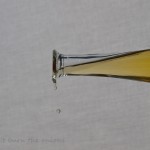 What is it?
What is it?
- Olive oil is a liquid fat obtained from the olive.
- the olive tree and its fruits are an integral part of the Mediterranean landscape and its culinary traditions.
- its origins can be traced back thousands of years, although no one knows who first had the idea of pressing olives for their oil!
- olive oil is the basis of a lot of Mediterranean dishes throughout the region and every country cultivates their own variety based on the types of olives native to the area.
- this means that the character, flavour and even the colour varies, Italian oil is greener than Spanish and is more peppery tasting whereas Greek oil is darker and stronger in taste.
What’s so great about it?
- in recent years olive oil, which had been appreciated primarily for its culinary contribution, has become associated with the beneficial effects attributed to the Mediterranean Diet.
- olive oil does not contain cholesterol and is composed of around 70 per cent monounsaturated fatty acids, with traces of the anti-oxidant vitamin E.
- Scientific research has revealed it to be especially beneficial for maintaining a healthy health and that it is better for our bodies than the polyunsaturated fats found in other vegetable oils
- it has also been found to have anti-inflammatory properties and a US study revealed that it can be as effective as traditional painkilllers and taking about 3 and 1/2 tablespoons of extra virgin oil is the equivalent of a 200 mg Ibuprofen pill!
- Virgin olive oil is the healthiest as it retains all the nutritional benefits and antioxidants of the fruit. These decrease in the less pure refined oils.
Did you know it is the only vegetable oil that is produced naturally without the use of chemicals or mixed with other oils?
Is olive oil fattening?
- It can be (at around 120 calories per tablespoon) but a little goes a long way and it is a “good” fat.
- In the light of recent scientific research, there has been a rethinking of the role of fat in our diets and it is now viewed as oversimplistic to include or reject certain foods simply on the basis of their calorific values. (See ” Saints not sinners” post)
- Oil is a rich source of energy in our diet and our body needs the right type of fat, in sufficient quantities, to work properly.
- It is a mistake to exclude oil based solely on its calorific value because it can play a vital role as part of a balanced diet and active lifestyle.
Buying guide:
Do you find the labels on olive oils confusing? Read on for a quick guide
How olive oil is produced:
- Olive oil production is based on the traditional method of crushing fresh olives for their oil. Some producers still use traditional granite millstones and gear presses, but more efficient hydraulic presses have replaced the old gear ones in many areas. This means that a lot of oil is extracted during “first pressing.”
- The old method meant that olives had to be pressed more than once to extract all the oil. Producers would write “First Pressing” on a label to show that this was the highest grade oil.
- Subsequent pressings were less “pure” as hot water would be poured on the crushed olives to soften them up.
- Other signs of quality are levels of acidity and whether the oil is from a single estate or mixed.
What is meant by acidity levels?
Originally the only way to judge the quality of an oil was by submitting it to the taste test. However as this was subjective, chemical testing was introduced.
Acidity levels are determined by the variety of olive and by production methods, the lower the acidity the better the oil.
Different types of oil:
EVOO (Extra virgin olive oil)
- traditionally from the first pressing, the label also denotes the highest quality and best flavour oil with low acidity (less than 1 per cent).
- To qualify the oil has to pass strict laboratory testing and impress a panel of experts who judge the oils for acidity as well as for aroma, flavour and colour.
Virgin Olive Oil
- The next best quality oil made from unrefined cold pressed oils.
- Maximum acidity level is 2 per cent so it only retains some of its natural flavours
- the oil can be produced from a mix of oils from different estates and still qualify for the label.
Pure Olive Oil
- this is a lower quality oil produced from a mixture of refined and virgin oils.
 Cooking guide:
Cooking guide:
- Regular olive oil is best for cooking as it is cheaper than virgin and has a higher smoke point (this is the temperature at which the chemicals in the oil break down and become greasy.)
- Virgin olive oil has a lower smoke point so it’s best used in its “raw” state and reserve for salads and dips!

You must be logged in to post a comment.